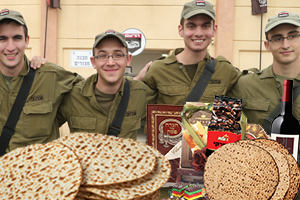Archaeologists from the Hebrew University of Jerusalem uncovered a prehistoric village in the Jordan Valley dating back 12,000 years.
The site of a newly exposed prehistoric village dating back 12,000 years, named NEG II by the researchers, is located at the Ein-Gev River in the middle of the perennial stream that flows west of the Sea of Galilee.
A series of excavations at the site revealed an abundance of findings, including human remains, flint tools, artworks, animal fossils, ground stone tools, and bone tools. The findings show that many people lived in the area, which is estimated to have covered roughly 1200 square meters.
The village differs markedly from others of its period in Israel. The findings included cultural characteristics typical of both the Old Stone Age known as the Paleolithic period and the New Stone Age known as the Neolithic period.
“Characterizing this important period of potential overlap in the Jordan Valley is crucial for the understanding of the socioeconomic processes that marked the shift from Paleolithic mobile societies of hunter-gatherers to Neolithic agricultural communities,” said excavation leader Dr. Leore Grosman of the Institute of Archaeology at the Hebrew University.
The Paleolithic period is the earliest and the longest period of prehistoric human history. The end of this period is marked by the transition to settled villages and the domestication of plants and animals as part of the agricultural lifestyle in the Neolithic period.
The archaeologists, in their research published in the PLOS ONE journal, described the village as one of the latest settlements in the Levant region of the Late Natufian sub-period, the last cultural sub-period of the Paleolithic era.
The excavation site was inhabited during the cold and dry global climatic event known as the Younger Dryas (11,600-12,900 years ago), when climatic changes caused Late Natufian groups in the Mediterranean to become increasingly mobile and smaller in size.
However, excavations at the site showed that groups in the Jordan Valley became more stationary and potentially larger in size during this period.
“The thick archaeological deposits, the uniformity of the tool types, and the flint knapping technology indicate intensive occupation of the site by the same cultural entity,” said Grosman.
The research, which sheds light on the historical shift from foraging to agriculture, was funded by the American School of Prehistoric Research at the Peabody Museum at Harvard University, the Israel Science Foundation, and the National Science Foundation.
By: Michael Bachner/TPS
Send Passover Packages to Needy Israeli Soldiers - Bring Them Joy!
We are honored to thank the young men and women of the IDF who risk their lives every day to protect the citizens of Israel. Since October 7th, soldiers have been on the battlefield for months - many are hoping to come home for Passover.
Join us in sending Passover food packages (and personal notes) to Israeli soldiers and their families.
Many soldiers spend the Passover holiday with needy families back home. The soldiers greatly appreciate your love and concern. Bring them Passover joy!
CLICK HERE TO SEND YOUR PACKAGE AND NOTE TO ISRAELI SOLDIERS!



